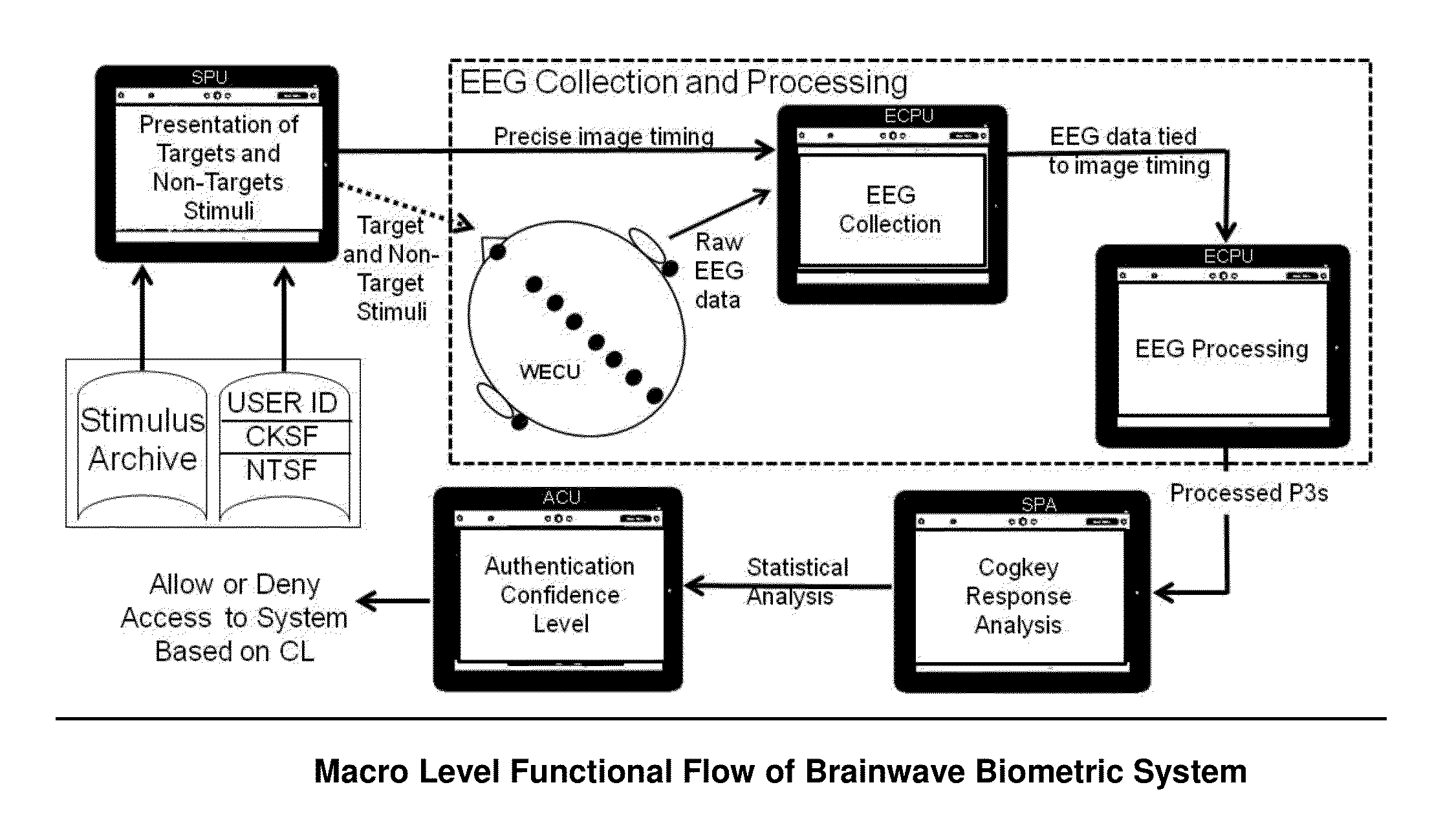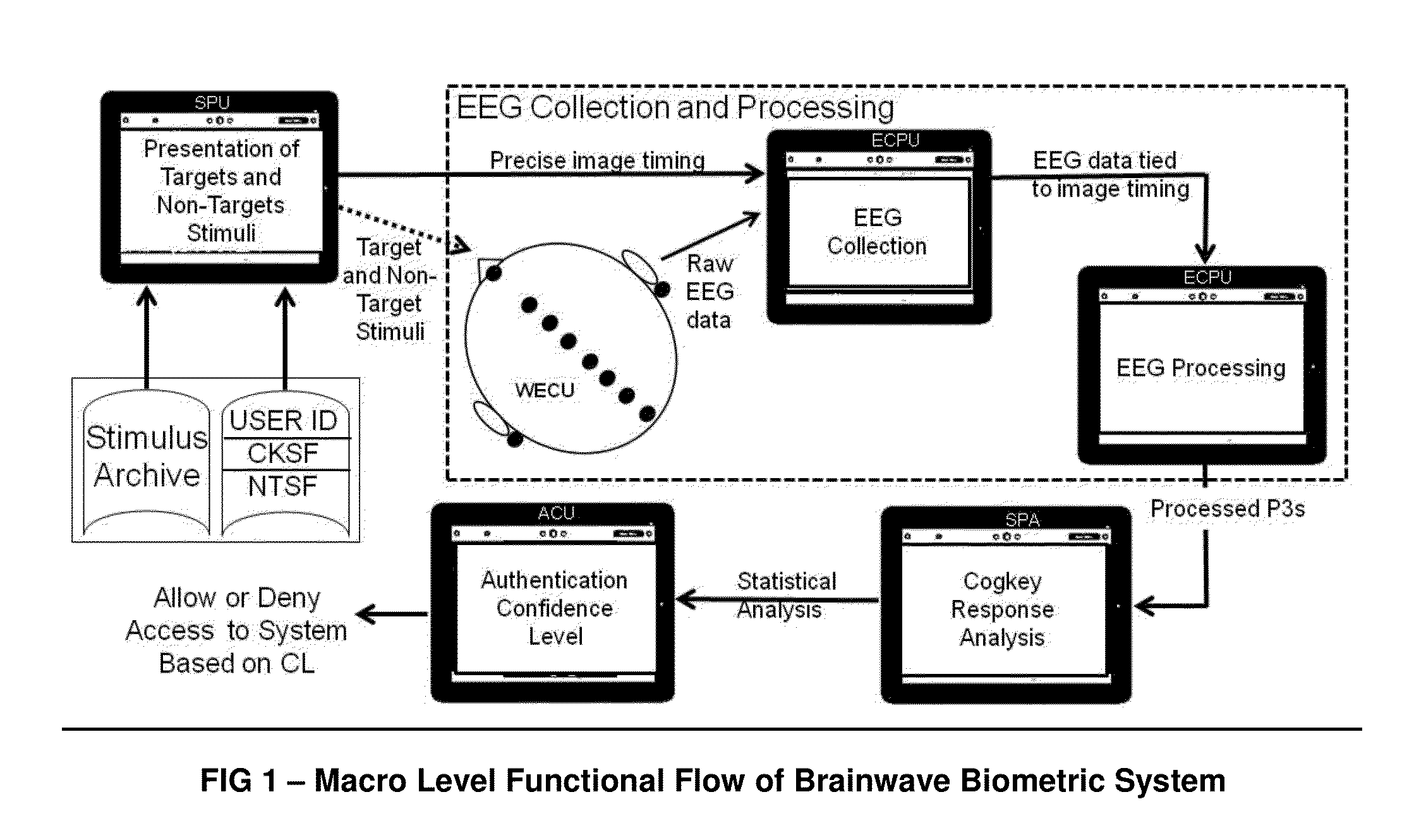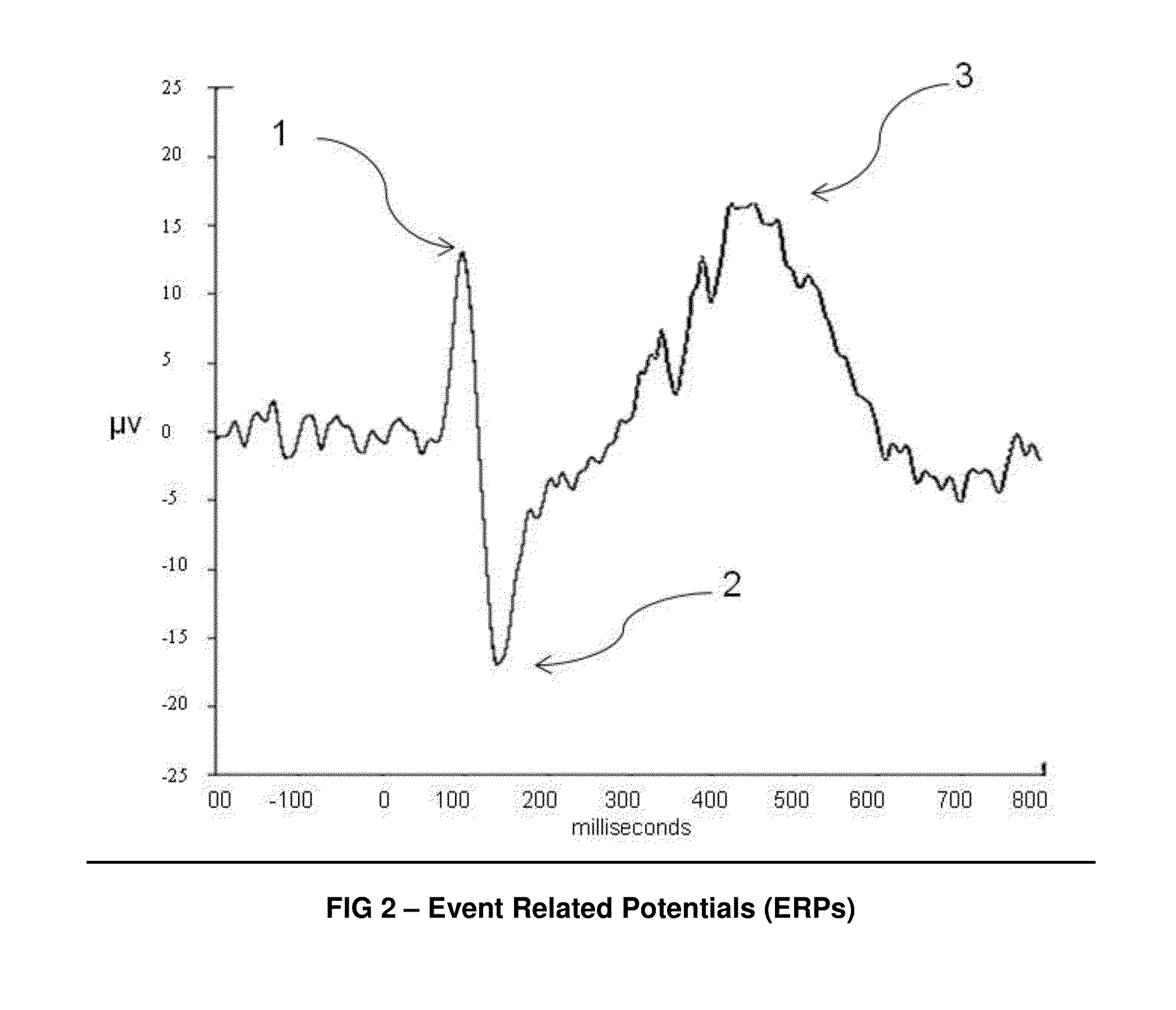Access Control System using Stimulus Evoked Cognitive Response
a technology of cognitive response and access control system, which is applied in the field of access control system, can solve the problems of impracticality at best of comparison of “bulk response of the brain”, and achieve the effects of reducing intrusion factor, high flexibility, and easy discrimination
- Summary
- Abstract
- Description
- Claims
- Application Information
AI Technical Summary
Benefits of technology
Problems solved by technology
Method used
Image
Examples
Embodiment Construction
[0043]Unlike most authentication and identification systems, the current invention does not require a lengthy biometric enrollment stage. The preferred embodiment of the system does not store a complex EEG model of each user, nor does it use autoregression, discriminant analysis, a neural network or machine learning, like much of the prior art. Rather, the system uses a shared secret, similar to a user password, that, when recognized by the user, will generate a measurable cognitive response called an Evoked Response Potential (ERP).
[0044]FIG. 1 shows the high level view of the system which includes a stimulus archive, Cogkey Stimulus File (CKSF), Non-target stimulus file (NTSF), stimulus presentation unit (SPU), wireless EEG collection unit (WECU), EEG collection and processing unit (ECPU), a statistical processing algorithm (SPA) and an access control unit (ACU).
[0045]The preferred embodiment uses the most prominent ERP, the P3 shown in FIG. 2, to measure the cognitive response to...
PUM
 Login to View More
Login to View More Abstract
Description
Claims
Application Information
 Login to View More
Login to View More - R&D
- Intellectual Property
- Life Sciences
- Materials
- Tech Scout
- Unparalleled Data Quality
- Higher Quality Content
- 60% Fewer Hallucinations
Browse by: Latest US Patents, China's latest patents, Technical Efficacy Thesaurus, Application Domain, Technology Topic, Popular Technical Reports.
© 2025 PatSnap. All rights reserved.Legal|Privacy policy|Modern Slavery Act Transparency Statement|Sitemap|About US| Contact US: help@patsnap.com



